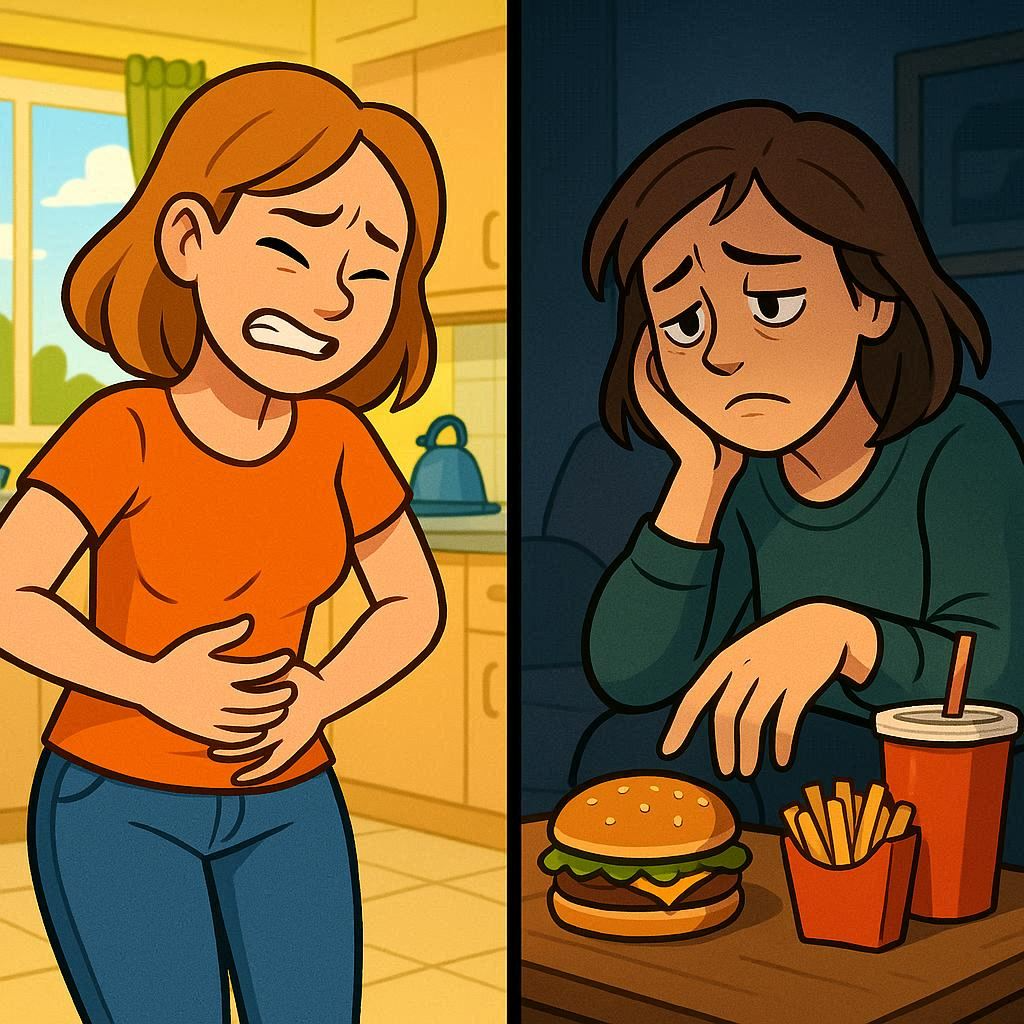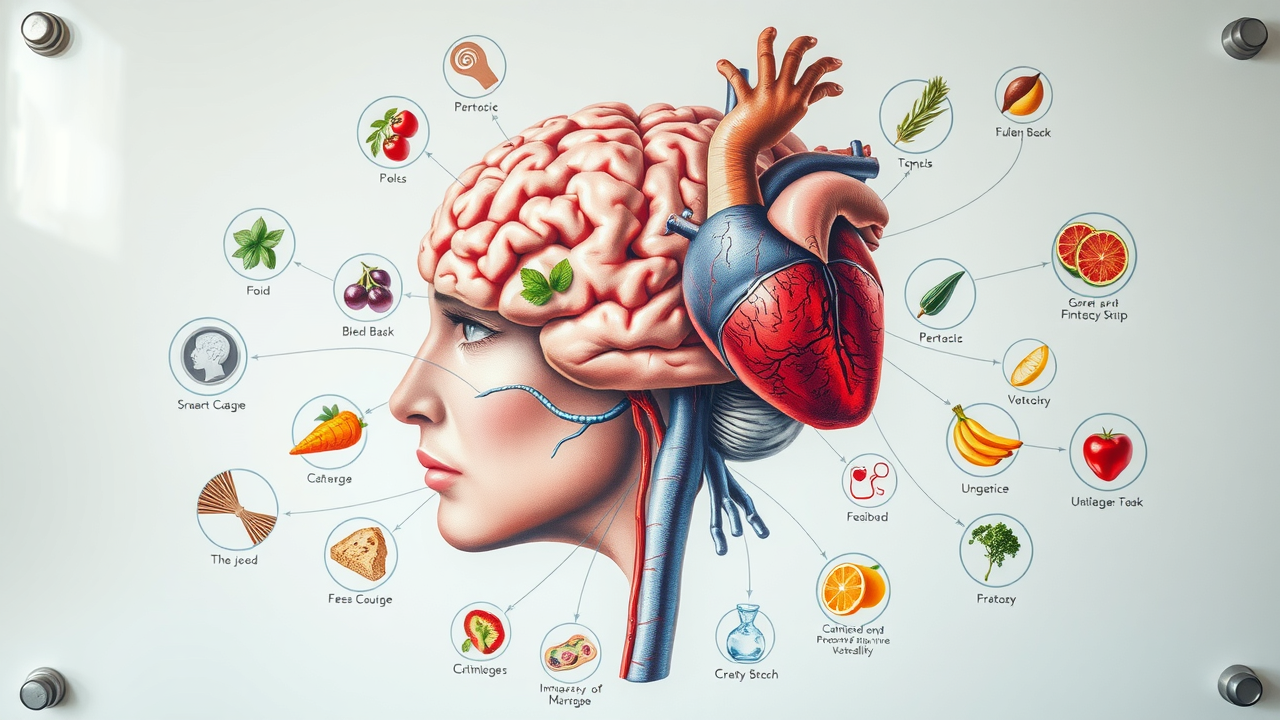Ever find yourself reaching for food when emotions run high? Emotional eating can feel unstoppable, but what if you could break the cycle? Discover practical steps to regain control and nourish both your body and mind, transforming your relationship with food for good.

Understanding Emotional Eating
Emotional eating is a common yet often misunderstood experience that can lead to unhealthy eating patterns and emotional eating disorders. At its core, it describes the pattern of turning to food in response to emotions rather than physical hunger. If you’ve ever felt compelled to eat after a stressful situation, or sought comfort in snacks when feeling down, you’ve experienced emotional eating, a behavior often linked to emotional hunger rather than physical hunger. Unfortunately, this habit can disrupt your eating patterns and lead to unhealthy choices over time.
Recognizing emotional eating is not about blaming yourself—rather, it’s about understanding your relationship with food and taking steps to improve your mental health. In this section, we’ll unpack what emotional eating is, how it differs from true physical hunger, and how to identify if you may be an emotional eater. This knowledge lays the foundation for positive change, helping you spot patterns, address triggers, and regain a sense of control.
What Is Emotional Eating?
Emotional eating happens when people use food—often high-calorie comfort foods—to cope with difficult emotions instead of satisfying real physical hunger. Whether it’s celebrating with dessert after good news or seeking solace in snacks during stressful times, these actions are driven by a need for comfort rather than the body’s nutritional requirements. Research suggests that individuals facing high levels of stress often turn to food for comfort, leading to a temporary lift in mood or feeling of relief.
However, these eating behaviors can become problematic if they are the main way someone manages emotional highs and lows. Physical cues of hunger, like a rumbling stomach, are absent, and food becomes a coping mechanism rather than nourishment. Recognizing this behavioral pattern is the first step in interrupting the cycle—and finding healthier ways to deal with difficult emotions.
Emotional eating can occur for many reasons—anxiety, loneliness, boredom, or even positive emotions. What ties these triggers together is a desire to feel better in the short term, even if it means ignoring the body’s real needs. Many emotional eaters discover this cycle when they notice persistent cravings that aren’t resolved by eating, or when food becomes the default response to stress. Understanding what emotional eating is helps you recognize it in your own life, setting the stage for strategies that address your emotional and physical hunger in a more balanced way.
How Emotional Eating Differs from Physical Hunger
Understanding the difference between emotional hunger and physical hunger is crucial for emotional eaters aiming to regain control of their eating habits and avoid developing eating disorders. Physical hunger develops gradually, often several hours after the last meal, and comes with physical signs such as a growling stomach or low energy. It can be satisfied by almost any type of food and subsides once you’re full. Emotional hunger, however, arises suddenly—triggered by stress, negative emotions, or even boredom. It frequently results in cravings for specific comfort foods (like sweets, chips, or fast food) and often persists even after eating, leaving you unsatisfied or even guilty.
Another key difference involves pace and awareness: emotional eating tends to be mindless and rushed, while physical eating is more conscious and deliberate. For many, emotional hunger coincides with negative body image thoughts or a desire to escape difficult feelings, pushing them to eat in response rather than actual need. By learning to recognize these patterns, you can distinguish when you are truly hungry and when you are turning to food as a coping mechanism. This self-awareness is an essential step for anyone looking to break free from the cycle of stress eating and create healthier eating patterns.

Signs You Might Be an Emotional Eater
Wondering if you might be an emotional eater? Recognizing the signs of emotional hunger can help you identify if emotional eating is influencing your eating behaviors and potentially leading to an eating disorder. If you frequently eat large amounts of food when you’re not physically hungry or crave specific “comfort foods” during stressful times, these may be red flags. Other indicators include feeling guilt or shame after eating, eating quickly and mindlessly, or only feeling better emotionally after you eat. Emotional eaters may use food as an escape from anxiety, disappointment, or boredom, rather than to genuinely fuel their body.
Emotional eating often interrupts your ability to feel satisfied with your meals, leading to an almost compulsive urge to keep eating even when you’re full. This can impact both your physical and mental health over time, possibly leading to weight gain or negative emotions related to body image. Understanding these signs can empower you to observe your current eating habits, recognize triggers, and search for healthier ways to deal with difficult emotions. If these experiences sound familiar, you’re not alone—and the next sections will provide tools to help you take back control.
The Link Between Emotional Eating and Eating Disorders

Emotional eating exists on a spectrum, and for some emotional eaters, it can progress into more serious eating disorders that require professional intervention. It’s important to recognize when this habit shifts from occasional comfort to a significant mental health concern. Eating disorders like binge eating disorder, bulimia nervosa, and others often start with patterns of emotional eating, especially when negative emotions are managed almost exclusively with food. In these cases, the eating pattern becomes a high-level coping mechanism, interfering with daily functioning, self-esteem, and overall well-being. Unraveling the connection highlights the importance of seeking professional help when emotional eating feels difficult to control or is resulting in serious health or social consequences.
When Does Emotional Eating Become an Eating Disorder?
Emotional eating can evolve into an eating disorder under certain circumstances. If eating becomes compulsive—where a person repeatedly binges even when not hungry, frequently eats alone out of shame, or feels unable to stop—the behavior may meet the criteria for binge eating disorder or another serious condition. Unlike occasional emotional hunger, eating disorders are characterized by persistent, repetitive eating behaviors that disrupt normal life. They often carry significant physical and psychological risks, including poor body image, weight gain, digestive problems, and increased risk of depression or anxiety.
Knowing when to seek help is crucial: you should consider talking to a mental health professional if emotional eating is causing distress, interfering with work or relationships, or leading to unhealthy eating patterns and fluctuating weight. Recognizing this tipping point can be transformative, helping you regain control before disordered eating takes hold.
Common Eating Disorders Linked to Emotional Eating
Several eating disorders, including binge eating disorder and bulimia nervosa, are commonly linked to persistent patterns of emotional eating. Binge eating disorder, the most prevalent, involves consuming large amounts of food in a short period, often as a way to cope with difficult or unwanted emotions. Bulimia nervosa includes cycles of binge eating followed by compensatory behaviors such as purging, intense exercise, or fasting. Both are marked by distress regarding eating behavior and difficulty regulating emotions without the use of food.
It’s important to note that even if you don’t meet the full diagnostic criteria for an eating disorder, frequent emotional eating can still negatively affect your physical and mental health, exacerbating issues like stress, anxiety, low self-esteem, and unhealthy weight gain. Early intervention and self-awareness can break the cycle before it becomes a serious disorder.
"Emotional eating isn’t about hunger – it’s about seeking comfort. Recognizing the difference can be transformative.” – Clinical Psychologist
What Triggers Emotional Eating?

Recognizing your personal triggers for emotional eating and emotional hunger helps you interrupt automatic responses and build healthier eating habits. Triggers are often emotional states, like anxiety, boredom, or frustration, but can also include environmental cues—such as certain social settings or even specific times of day. Many people turn to food when under stress, feeling lonely, or when experiencing fatigue. These emotions can heighten cravings for comfort food and make it more difficult to distinguish between emotional and physical hunger. By monitoring your triggers, you gain valuable insights into why you eat in response to feelings, setting yourself up for long-term change.
If you notice that your hunger seems constant or difficult to satisfy, it may be helpful to explore the underlying causes of persistent hunger and how they relate to emotional eating. For a deeper look at why you might feel hungry all the time and practical solutions, check out this comprehensive guide to understanding constant hunger.
Emotional Hunger vs. Physical Hunger: Key Differences
Understanding the contrasts between emotional hunger and physical hunger is a cornerstone for emotional eaters seeking to develop healthy eating habits and avoid relapse. Emotional hunger strikes quickly and is usually triggered by unpleasant or stressful emotions, rather than a true need for nourishment. It often prompts an intense, sudden craving for specific foods, like sweets or carb-heavy snacks, and persists even after eating, sometimes resulting in feelings of guilt or shame. Eating to satisfy emotional hunger is frequently automatic and mindless, lacking the awareness present when eating to alleviate real physical hunger.
In contrast, physical hunger emerges gradually and can be postponed if necessary. It’s satisfied with a variety of foods and is accompanied by tangible signs like a growling stomach or fatigue. Eating for physical hunger typically ends when you feel comfortably full, leaving you without any emotional aftertaste or regret. Mastering these distinctions equips you with the ability to notice when you’re falling into old eating patterns, helping you to respond to actual body needs rather than emotions.

Typical Emotional Triggers: Stress, Boredom, and More
Most people experience a consistent set of emotional or situational cues that fuel the desire to eat—even when they aren’t physically hungry. High levels of stress, long periods of boredom, feelings of isolation, and fatigue are among the most common. Other triggers may stem from childhood patterns, such as using food as a reward or comfort during emotional moments. Social situations, too, often act as triggers—think about eating at family gatherings or snacking during celebrations, regardless of true hunger.
The process of becoming aware of your own triggers is empowering. Emotional eating is often intertwined with a learned response to certain environments or emotional states, and by identifying patterns, you can start to explore new ways to deal with difficult emotions.
Anxiety
Loneliness
Fatigue
Childhood patterns
Social situations
The Cycle of Emotional Eating and Its Impact
Emotional eating creates a cycle that may provide short-term comfort but leads to long-term consequences for both body and mind. After indulging in stress eating, the initial relief is often quickly replaced by guilt or regret, which can further fuel negative emotions and perpetuate the cycle. Over time, this can become a habitual coping mechanism, affecting daily routines, personal relationships, and overall wellbeing. Understanding the cycle’s full impact helps you develop compassion for yourself while taking steps to replace old habits with new, healthier coping strategies.
Short-term Comfort, Long-term Consequences

The most challenging aspect of emotional eating is the fleeting sense of comfort it brings. Eating in response to stress or difficult emotions delivers a short-lived sense of relief or distraction from negative feelings, but this comfort is typically followed by guilt, frustration, or disappointment. Repeating this cycle can lead to high levels of food intake, unhealthy eating habits, and persistent weight gain over time, undermining both mental health and self-esteem. Individuals may find themselves in a repetitive loop—feeling bad, eating to cope, and then feeling worse due to their eating choices.
Scientifically, the act of eating comfort food activates reward pathways in the brain, which is why it feels good in the moment. However, if these eating behaviors are the primary method for coping with emotional distress, they can gradually replace healthier stress management strategies, leading to a disconnection from the body’s natural hunger cues. This not only diminishes physical wellbeing but can also disrupt efforts to improve body image, making it harder to regain a healthy sense of control.
How Emotional Eating Impacts Mental and Physical Health
The long-term consequences of emotional eating can contribute to the development of eating disorders and negatively impact both mental and physical health. On the physical level, frequent stress eating or binge eating can lead to significant weight gain, metabolic problems, and digestive issues. But the psychological effects can be just as damaging. Eating in response to emotions rather than physical cues often triggers a negative cycle of shame, poor body image, and decreased motivation to adopt healthier eating patterns.
Mental health conditions such as depression and anxiety often co-exist with emotional eating disorders. Chronic reliance on food for emotional support can erode self-esteem and make other, more effective coping mechanisms seem out of reach. For these reasons, learning to break the emotional eating cycle is a crucial step in achieving both a healthier body and a resilient mind. By cultivating greater self-awareness and learning new strategies, you can move toward greater emotional balance and improved overall well-being.
Comparison: Emotional Hunger vs. Physical Hunger
Category |
Emotional Hunger |
Physical Hunger |
|---|---|---|
Symptoms |
Sudden craving, specific foods, no physical signs |
Gradual onset, true stomach signals, any food satisfies |
Timeline |
Comes on quickly, often unrelated to mealtimes |
Builds slowly, tied to last meal consumed |
Triggers |
Emotional states (stress, loneliness, boredom) |
Physical depletion of energy and nutrients |
Satiation |
Rarely feel satisfied, may experience guilt afterward |
Feel satisfied and ready to stop when full |

Step-by-Step Guide: How to Stop Emotional Eating
Breaking free from emotional eating isn’t about willpower—it’s about building understanding, awareness, and new skills. This step-by-step guide incorporates proven ways to deal with emotional hunger, recognize triggers, and build eating habits that support both mental and physical health. Each step is tailored to empower you to regain a sense of agency around food and cope with difficult feelings in a nurturing way.
Step 1: Recognize the Signs of Emotional Eating

Self-awareness is the foundation of changing any eating behavior. By honestly documenting your eating patterns—including when, what, and why you eat—you can separate emotional hunger from physical hunger. Journaling helps reveal patterns, such as always reaching for high-calorie snacks during stressful times or late at night. Pay attention to your mood before and after eating, as this can shine a light on specific triggers. Recognizing the signs early allows you to intercept automatic reactions, providing a choice where there used to be a compulsion.
Noticing if you eat in response to high levels of stress, sadness, anxiety, or boredom—rather than actual hunger—can help develop new, more empowering ways to deal with those emotions. Practicing this self-reflection daily lays the groundwork for interrupting old cycles and exploring healthier alternatives for comfort.
Step 2: Identify Personal Triggers
Take note of the situations, emotions, or even people that prompt your emotional eating episodes. Everyone’s triggers are unique; common ones include workplace stress, feeling overwhelmed at home, loneliness, or even celebrations that trigger positive emotions. By keeping a food and mood journal, you can start to map out these personal triggers and notice patterns you might otherwise overlook.
Understanding your triggers offers a powerful tool to help anticipate challenges. When you can foresee a stressful situation or a moment of vulnerability, you become better equipped to plan healthier responses. Awareness is the first building block to long-lasting change and is at the heart of emotional eating recovery.
Step 3: Build Mindful Eating Habits

Mindful eating is about being present with your food: noticing flavors, textures, and the sensations of fullness and satisfaction. Slowing down, eating without distractions, and savoring each bite allow you to enjoy food for nourishment rather than as a quick fix for emotions. Research suggests that mindful eating helps individuals break the cycle of binge eating and stress eating, reducing the urge to turn to food for comfort.
Incorporating mindful habits—like sitting down for meals, chewing slowly, and checking in with your hunger level before, during, and after eating—teaches you to trust your body’s cues rather than giving in to impulse. Sharing meals with supportive friends or family can reinforce positive habits, making eating a joyful, conscious experience instead of an emotional crutch.
Step 4: Practice Emotional Regulation Techniques
Developing alternative methods to process and express emotions is essential for stopping emotional eating. Calming techniques such as deep breathing, meditation, or even a short walk can break the automatic connection between feeling stressed and reaching for food. Other ways to regulate emotions might include journaling, creative activities, seeking social support, or talking with a trusted friend.
Practicing self-compassion—reminding yourself that difficult emotions are natural and don’t always need to be fixed with food—also builds resilience. Cognitive behavioral strategies, like reframing negative thoughts or challenging perfectionism, further support lasting emotional health and balanced eating behaviors.
Step 5: Seek Support and Professional Help for Eating Disorders
If emotional eating feels overwhelming or is impacting your daily life, seeking professional help is essential to address potential eating disorders and develop effective coping strategies. Therapists, psychologists, and registered dietitians can offer tailored support, helping you explore underlying issues and build strong coping skills. Group support (like Overeaters Anonymous) and online communities can help reduce feelings of isolation and offer encouragement along the way.
Professional intervention is especially important if emotional eating has become chronic or developed into an eating disorder. Evidence-based treatments—like cognitive behavioral therapy—can aid in understanding thought and behavior patterns and promote healthier, more sustainable ways to care for your body and mind.
Keep a food and mood journal
Pause before eating
Use calming techniques (deep breathing, meditation)
Plan healthy snacks
Reach out to a support system
Preventing Relapse: Staying in Control of Emotional Eating

Maintaining progress over time takes intention, planning, and self-compassion. Preventing a relapse into old emotional eating habits involves building a supportive environment and incorporating new routines that meet your emotional needs without overeating. Remember that setbacks are a natural part of the recovery journey. Consistently practicing mindful eating, reflecting on triggers, and using support systems can greatly enhance your success in managing emotional eating for the long term.
Building a Healthy Relationship with Food
Developing a healthy relationship with food is about more than choosing the “right” foods—it’s about transforming the way you think, feel, and act around eating. Letting go of guilt, judgment, or strict eating rules opens space for enjoyment and satisfaction. Give yourself permission to occasionally enjoy comfort food, acknowledging that all foods can fit into a balanced lifestyle when eaten mindfully.
Try to make food choices based on what will nourish your body and boost energy, not just soothe emotions. Reframe set-backs as learning opportunities, and celebrate small victories as you create a new, more positive eating pattern. Over time, these actions reinforce self-efficacy and self-trust—a foundation for lasting change.
Long-term Strategies for Emotional Eater Success
Success in overcoming emotional eating is about progress, not perfection. Prepare for challenging moments by keeping healthy snacks accessible, scheduling regular meals, and continuing to check in with your emotional state. Develop alternative rituals that bring comfort, like engaging in hobbies, connecting with friends, or practicing self-care.
Continual learning and support are vital. Setbacks can happen—what matters most is returning to your goals with curiosity and compassion, not criticism. Over time, healthy eating behaviors become second nature, and the urge to eat in response to stress or emotions diminishes.
"Progress over perfection—every mindful choice counts when overcoming emotional hunger.”
People Also Ask: Emotional Eating
Why am I emotional eating?
Emotional eating often develops as a way to cope with difficult emotions, stress, or boredom. When you eat in response to high levels of emotion—rather than true physical hunger—it’s usually because food provides temporary comfort. Many people form these habits during stressful situations or as learned behaviors from childhood, especially when food was used as a reward or consolation. Becoming aware of your personal emotional triggers is key to making positive changes.
What is an example of emotional eating?
A common example of emotional eating is turning to snack foods or sweets immediately after a tough day at work—even if you’re not physically hungry. You might find yourself eating a large bowl of ice cream while watching TV to distract from stress, or raiding the pantry after an argument for chips and cookies. These eating patterns are not about satisfying physical hunger, but about soothing emotions or escaping uncomfortable feelings.

Is emotional eating considered an eating disorder?
While emotional eating itself does not automatically qualify as an eating disorder, it can become problematic if it leads to frequent binge eating, significant emotional distress, or disruptions to daily life. When the behavior is persistent, compulsive, and harmful—such as in binge eating disorder—it meets criteria for a clinical diagnosis. If emotional eating affects your health or well-being, seeking professional guidance is always recommended.
What trauma causes emotional eating?
Several forms of trauma may lead to emotional eating, including childhood neglect, abuse, loss of a loved one, or chronic exposure to stressful or unsafe environments. These experiences can disrupt healthy emotional regulation, making food an appealing coping mechanism. If traumatic memories or unresolved feelings drive your eating patterns, therapy and trauma-informed care can be powerful tools for healing and change.
FAQs About Emotional Eating
Can therapy help with emotional eating?
Yes, therapy—especially cognitive behavioral therapy—can be highly effective by helping you identify triggers, change thinking patterns, and develop healthier coping skills.Are there specific diets for emotional eaters?
There is no “one-size-fits-all” diet for emotional eating, but focusing on mindful eating and balanced, regular meals helps reduce emotional hunger and encourages healthier eating behaviors.How quickly can I stop emotional eating?
The process is gradual; making lasting changes takes time, practice, and patience. Celebrate small victories and stay consistent with self-awareness and healthy routines.Do certain foods make emotional eating worse?
Foods high in sugar, fat, and salt can trigger cravings and reinforce emotional eating patterns. Choosing nutrient-dense foods and avoiding restrictive diets supports a more balanced relationship with food.
Conclusion
Transform Your Relationship with Food: Take Charge Against Emotional Eating Today
If you’re ready to take your understanding of healthy eating even further, consider exploring how broader dietary trends and choices can impact your well-being. Our in-depth analysis of the riskiest diets people are trying in 2025 offers valuable insights into what to avoid and how to make informed, sustainable decisions for your health.
By staying informed about both emotional and strategic aspects of nutrition, you’ll be better equipped to build a resilient, positive relationship with food that lasts. Continue your journey toward wellness by learning how to spot diet pitfalls and embrace habits that truly support your goals.
Sources
National Eating Disorders Association – https://www.nationaleatingdisorders.org
Psychology Today – https://www.psychologytoday.com/us/basics/emotional-eating
Mind – https://www.mind.org.uk/information-support/types-of-mental-health-problems/eating-problems/
To deepen your understanding of emotional eating and discover effective strategies to manage it, consider exploring the following resources:
“Weight loss: Gain control of emotional eating” by the Mayo Clinic offers comprehensive insights into identifying emotional eating triggers and practical tips to regain control over your eating habits. (mayoclinic.org)
“Struggling with emotional eating?” from Harvard Health provides guidance on recognizing the causes and triggers of emotional eating, along with strategies to break the cycle and develop healthier coping mechanisms. (health.harvard.edu)
These resources offer valuable information and actionable steps to help you address emotional eating and foster a healthier relationship with food.
 Add Row
Add Row  Add
Add 




Write A Comment